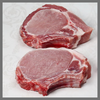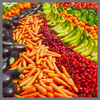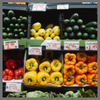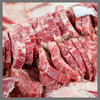-

Sep
08
Interpretive Summary: Effects of a Saccharomyces cerevisiae fermentation product-supplemented diet on circulating immune cells and oxidative stress markers of dogs
.png?sfvrsn=d6fe52d1_0)
Saccharomyces cerevisiae fermentation product (SCFP) is a yeast product containing bioactive fermentation metabolites, residual yeast cells, and yeast cell wall fragments. In this study, SCFP was investigated for its impacts on immune health, oxidative stress, and skin and hair coat health in dogs.
Read more
-

Sep
08
Interpretive Summary: Infographic: Effects of a Saccharomyces cerevisiae fermentation product-supplemented diet on circulating immune cells and oxidative stress markers in dogs
.png?sfvrsn=b1fe52d1_0)
The American Society of Animal Science and the Editors of the Journal of Animal Science invite you to have a look at the latest infographic and paper which explores how a fermentation product included in the diet of dogs may impact immune cells, oxidative stress/inflammation and skin and coat health.
Read more
-

Sep
01
USDA investing $197 million in conservation

The United States Department of Agriculture (USDA) has announced through the Regional Conservation Partnership Program, that it will be awarding $197 million for 41 locally-led conservation projects. The Regional Conservation Partnership Program (RCPP) leverages partner resources to advance innovative projects that address climate change, enhance water quality, and address other critical challenges on agricultural land.
Read more
-

Sep
01
The Inflation Reduction Act voted on by House

The House recently passed the Inflation Reduction Act, sending the legislation to the desk of President Joe Biden. The Act aims to lower healthcare costs, combat climate change, raise taxes on some large companies, and reduce the deficit.
Read more
-

Sep
01
Massachusetts delays rule banning the sale of some pork

A federal judge in Massachusetts has agreed to delay the enforcement of Question 3, the state law that would ban the sale of pork that comes from animals not housed according to the state’s housing standards. Massachusetts’s Question 3 requirements are like those in California’s Proposition 12, which has been challenged in a case that will be heard by the Supreme Court this term, National Pork Producers Council v. Ross.
Read more
-

Sep
01
Homeland Security pursues support for agriculture defense

The United States Department of Homeland Security (DHS) Science and Technology Directorate (S&T) has released a request for information regarding capabilities for science support for the S&T Food, Agriculture, and Veterinary Defense Program (FAV-D). DHS recently established the Office of Health Security to refocus department efforts on human and agriculture security.
Read more
-

Sep
01
Gus Schumacher Nutrition Incentive Program receives USDA support

The Gus Schumacher Nutrition Incentive Program (GusNIP) brings together stakeholders from various parts of the food and healthcare systems. The United States Department of Agriculture (USDA) has announced almost $8 million to GusNIP’s Produce Prescription Project, as part of the American Rescue Plan to be administered by the USDA’s National Institute of Food and Agriculture (NIFA).
Read more
-

Sep
01
Food prices decline in July 2022

The Food and Agriculture Organization of the United Nations (FAO) has released the FAO Food Price Index (FFPI) for July 2022. The FFPI is a measure of the monthly change in international prices of a basket of food commodities.
Read more
-

Sep
01
Expanding Local Meat Processing Act Introduced

Expanding Local Meat Processing Act, a companion act to the Amplifying Processing of Livestock in the United States Act (A-Plus Act), has been introduced to the Senate. The bill would reduce regulatory red tape to enable livestock auction market owners to invest in small meat packing operations.
Read more
-

Sep
01
CHIPS Act is signed into law

The Creating Helpful Incentives to Produce Semiconductors for America Act or the CHIPS and Science Act of 2022 was passed by both the House and Senate with bipartisan support. The Act will strengthen American manufacturing, supply chains, and national security while investing in research and development, science and technology, and the workforce of the future to keep the United States as the international leader in specific industries.
Read more
-

Sep
01
Biden Administration supports pork producers in Prop 12
.png?sfvrsn=cea52d1_0)
The Solicitor General of the United States, Elizabeth Prelogar, has filed a brief in support of the National Pork Producers Council (NPPC) and the American Farm Bureau Federation’s (AFBF) lawsuit against California’s Proposition 12. The Proposition mandates farm animal confinement standards and directs the Department and the Department of Public Health to jointly promulgate regulations to implement the provisions for specified farm animals and the sale of specified products derived from them.
Read more
-

Sep
01
Americans prefer in-store grocery shopping, according to study
.png?sfvrsn=ecea52d1_0)
A new study from researchers at the University of Illinois Urbana-Champaign looked at how American food-buying behaviors have changed as a result of the COVID-19 pandemic. The researchers also examined how these behaviors changed through the development of vaccines and as case numbers fluctuated.
Read more
-

Aug
24
Interpretive Summary: Meta-analysis of the effects of the dietary application of exogenous alpha-amylase preparations on performance, nutrient digestibility, and rumen fermentation of lactating dairy cows
.png?sfvrsn=42ec52d1_0)
For more than a decade, starch-degrading enzymes (amylolytic enzymes) have been used as a strategy to increase total-tract starch degradation to increase milk yield of dairy cows. Therefore, we conducted a meta-analysis to evaluate the effectiveness of starch-degrading enzymes on starch digestion and milk yield in dairy cows.
Read more
-

Aug
24
Interpretive Summary: Effect of feeding calcium gluconate embedded in a hydrogenated fat matrix on feed intake, gastrointestinal fermentation and morphology, intestinal brush border enzyme activity and blood metabolites in growing lambs
.png?sfvrsn=6eec52d1_0)
Gluconate salts have been reported to be metabolized by microbes in the gastrointestinal tract to yield butyrate. Butyrate has shown potential to enhance functionality of the gastrointestinal tract by increasing the absorptive surface area, enzyme activity, and the barrier function.
Read more
-

Aug
24
Interpretive Summary: Effect of live yeast supplementation in sow diet during gestation and lactation on sow and piglet fecal microbiota, health, and performance
.png?sfvrsn=83ee52d1_0)
Feeding live yeast Saccharomyces cerevisiae var. boulardii (SB) in pig diets is recommended to promote a better health and reduce antibiotic use during critical periods like weaning. Our study was conducted to determine if SB added to the diet of sows during the last 2 mo of gestation and the 4 wk of lactation may contribute to support the health and performance of their piglets before and after weaning.
Read more
-

Aug
24
Interpretive Summary: Postbiotic effects of Lactobacillus fermentate on intestinal health, mucosa-associated microbiota, and growth efficiency of nursery pigs challenged with F18+Escherichia coli
c76230897d8c62e581bfff00009094bd.png?sfvrsn=45ee52d1_0)
Newly weaned pigs are susceptible to multiple stressors that may lead to postweaning diarrhea, thereby causing significant economic losses in the swine industry. Enterotoxigenic Escherichia coli strains are the major agents causing diarrhea in newly weaned pigs.
Read more
-

Aug
24
Interpretive Summary: Improvement in feed efficiency and reduction in nutrient loading from rainbow trout farms: the role of selective breeding
.png?sfvrsn=60ee52d1_0)
Resource efficiency, the ratio of inputs to outputs, is essential for both the economic and environmental performance of aquaculture. The data from commercial rainbow trout farms showed that from 1980 onwards, the farm-level feed conversion ratio (FCR) improved by 53.4%, and the specific nitrogen and phosphorus loading from the farms decreased by over 70%.
Read more
-

Aug
24
Interpretive Summary: Sensory attributes, dog preference ranking, and oxidation rate evaluation of sorghum-based baked treats supplemented with soluble animal proteins
.png?sfvrsn=78ee52d1_0)
Treats are commonly given to dogs to create a better relationship with the owner. Most treats on the market are baked and wheat based as this grain has gluten that provides good texture attributes and facilitates production.
Read more
-

Aug
24
Interpretive Summary: Oral microbiota populations of adult dogs consuming wet or dry foods
.png?sfvrsn=98ef52d1_0)
Canned wet foods are often blamed for poor oral health in dogs, but comparison between wet and dry foods is not commonly done. We used 12 healthy adult dogs to determine differences in oral health measures, breath odor, and oral bacteria populations of dogs consuming wet or dry foods.
Read more
-

Aug
24
Interpretive Summary: Impact of prepartum administration of a vaccine against infectious calf diarrhea on nonspecific colostral immunoglobulin concentrations of dairy cows
.png?sfvrsn=bbef52d1_0)
Unlike human babies, calves do not receive protective immune proteins (immunoglobulins) from the mother before birth, so a sufficient volume of immunoglobulin-rich colostrum of adequate quality must be consumed within hours of birth. It can be a challenge to meet this requirement for all dairy calves.
Read more
 SepInterpretive Summary: Effects of a Saccharomyces cerevisiae fermentation product-supplemented diet on circulating immune cells and oxidative stress markers of dogs
SepInterpretive Summary: Effects of a Saccharomyces cerevisiae fermentation product-supplemented diet on circulating immune cells and oxidative stress markers of dogs.png?sfvrsn=d6fe52d1_0) Saccharomyces cerevisiae fermentation product (SCFP) is a yeast product containing bioactive fermentation metabolites, residual yeast cells, and yeast cell wall fragments. In this study, SCFP was investigated for its impacts on immune health, oxidative stress, and skin and hair coat health in dogs.
Saccharomyces cerevisiae fermentation product (SCFP) is a yeast product containing bioactive fermentation metabolites, residual yeast cells, and yeast cell wall fragments. In this study, SCFP was investigated for its impacts on immune health, oxidative stress, and skin and hair coat health in dogs. SepInterpretive Summary: Infographic: Effects of a Saccharomyces cerevisiae fermentation product-supplemented diet on circulating immune cells and oxidative stress markers in dogs
SepInterpretive Summary: Infographic: Effects of a Saccharomyces cerevisiae fermentation product-supplemented diet on circulating immune cells and oxidative stress markers in dogs.png?sfvrsn=b1fe52d1_0) The American Society of Animal Science and the Editors of the Journal of Animal Science invite you to have a look at the latest infographic and paper which explores how a fermentation product included in the diet of dogs may impact immune cells, oxidative stress/inflammation and skin and coat health.
The American Society of Animal Science and the Editors of the Journal of Animal Science invite you to have a look at the latest infographic and paper which explores how a fermentation product included in the diet of dogs may impact immune cells, oxidative stress/inflammation and skin and coat health. SepUSDA investing $197 million in conservation
SepUSDA investing $197 million in conservation The United States Department of Agriculture (USDA) has announced through the Regional Conservation Partnership Program, that it will be awarding $197 million for 41 locally-led conservation projects. The Regional Conservation Partnership Program (RCPP) leverages partner resources to advance innovative projects that address climate change, enhance water quality, and address other critical challenges on agricultural land.
The United States Department of Agriculture (USDA) has announced through the Regional Conservation Partnership Program, that it will be awarding $197 million for 41 locally-led conservation projects. The Regional Conservation Partnership Program (RCPP) leverages partner resources to advance innovative projects that address climate change, enhance water quality, and address other critical challenges on agricultural land. SepThe Inflation Reduction Act voted on by House
SepThe Inflation Reduction Act voted on by House The House recently passed the Inflation Reduction Act, sending the legislation to the desk of President Joe Biden. The Act aims to lower healthcare costs, combat climate change, raise taxes on some large companies, and reduce the deficit.
The House recently passed the Inflation Reduction Act, sending the legislation to the desk of President Joe Biden. The Act aims to lower healthcare costs, combat climate change, raise taxes on some large companies, and reduce the deficit. SepMassachusetts delays rule banning the sale of some pork
SepMassachusetts delays rule banning the sale of some pork A federal judge in Massachusetts has agreed to delay the enforcement of Question 3, the state law that would ban the sale of pork that comes from animals not housed according to the state’s housing standards. Massachusetts’s Question 3 requirements are like those in California’s Proposition 12, which has been challenged in a case that will be heard by the Supreme Court this term, National Pork Producers Council v. Ross.
A federal judge in Massachusetts has agreed to delay the enforcement of Question 3, the state law that would ban the sale of pork that comes from animals not housed according to the state’s housing standards. Massachusetts’s Question 3 requirements are like those in California’s Proposition 12, which has been challenged in a case that will be heard by the Supreme Court this term, National Pork Producers Council v. Ross. SepHomeland Security pursues support for agriculture defense
SepHomeland Security pursues support for agriculture defense The United States Department of Homeland Security (DHS) Science and Technology Directorate (S&T) has released a request for information regarding capabilities for science support for the S&T Food, Agriculture, and Veterinary Defense Program (FAV-D). DHS recently established the Office of Health Security to refocus department efforts on human and agriculture security.
The United States Department of Homeland Security (DHS) Science and Technology Directorate (S&T) has released a request for information regarding capabilities for science support for the S&T Food, Agriculture, and Veterinary Defense Program (FAV-D). DHS recently established the Office of Health Security to refocus department efforts on human and agriculture security. SepGus Schumacher Nutrition Incentive Program receives USDA support
SepGus Schumacher Nutrition Incentive Program receives USDA support The Gus Schumacher Nutrition Incentive Program (GusNIP) brings together stakeholders from various parts of the food and healthcare systems. The United States Department of Agriculture (USDA) has announced almost $8 million to GusNIP’s Produce Prescription Project, as part of the American Rescue Plan to be administered by the USDA’s National Institute of Food and Agriculture (NIFA).
The Gus Schumacher Nutrition Incentive Program (GusNIP) brings together stakeholders from various parts of the food and healthcare systems. The United States Department of Agriculture (USDA) has announced almost $8 million to GusNIP’s Produce Prescription Project, as part of the American Rescue Plan to be administered by the USDA’s National Institute of Food and Agriculture (NIFA). SepFood prices decline in July 2022
SepFood prices decline in July 2022 The Food and Agriculture Organization of the United Nations (FAO) has released the FAO Food Price Index (FFPI) for July 2022. The FFPI is a measure of the monthly change in international prices of a basket of food commodities.
The Food and Agriculture Organization of the United Nations (FAO) has released the FAO Food Price Index (FFPI) for July 2022. The FFPI is a measure of the monthly change in international prices of a basket of food commodities. SepExpanding Local Meat Processing Act Introduced
SepExpanding Local Meat Processing Act Introduced Expanding Local Meat Processing Act, a companion act to the Amplifying Processing of Livestock in the United States Act (A-Plus Act), has been introduced to the Senate. The bill would reduce regulatory red tape to enable livestock auction market owners to invest in small meat packing operations.
Expanding Local Meat Processing Act, a companion act to the Amplifying Processing of Livestock in the United States Act (A-Plus Act), has been introduced to the Senate. The bill would reduce regulatory red tape to enable livestock auction market owners to invest in small meat packing operations. SepCHIPS Act is signed into law
SepCHIPS Act is signed into law The Creating Helpful Incentives to Produce Semiconductors for America Act or the CHIPS and Science Act of 2022 was passed by both the House and Senate with bipartisan support. The Act will strengthen American manufacturing, supply chains, and national security while investing in research and development, science and technology, and the workforce of the future to keep the United States as the international leader in specific industries.
The Creating Helpful Incentives to Produce Semiconductors for America Act or the CHIPS and Science Act of 2022 was passed by both the House and Senate with bipartisan support. The Act will strengthen American manufacturing, supply chains, and national security while investing in research and development, science and technology, and the workforce of the future to keep the United States as the international leader in specific industries. SepBiden Administration supports pork producers in Prop 12
SepBiden Administration supports pork producers in Prop 12.png?sfvrsn=cea52d1_0) The Solicitor General of the United States, Elizabeth Prelogar, has filed a brief in support of the National Pork Producers Council (NPPC) and the American Farm Bureau Federation’s (AFBF) lawsuit against California’s Proposition 12. The Proposition mandates farm animal confinement standards and directs the Department and the Department of Public Health to jointly promulgate regulations to implement the provisions for specified farm animals and the sale of specified products derived from them.
The Solicitor General of the United States, Elizabeth Prelogar, has filed a brief in support of the National Pork Producers Council (NPPC) and the American Farm Bureau Federation’s (AFBF) lawsuit against California’s Proposition 12. The Proposition mandates farm animal confinement standards and directs the Department and the Department of Public Health to jointly promulgate regulations to implement the provisions for specified farm animals and the sale of specified products derived from them. SepAmericans prefer in-store grocery shopping, according to study
SepAmericans prefer in-store grocery shopping, according to study.png?sfvrsn=ecea52d1_0) A new study from researchers at the University of Illinois Urbana-Champaign looked at how American food-buying behaviors have changed as a result of the COVID-19 pandemic. The researchers also examined how these behaviors changed through the development of vaccines and as case numbers fluctuated.
A new study from researchers at the University of Illinois Urbana-Champaign looked at how American food-buying behaviors have changed as a result of the COVID-19 pandemic. The researchers also examined how these behaviors changed through the development of vaccines and as case numbers fluctuated. AugInterpretive Summary: Meta-analysis of the effects of the dietary application of exogenous alpha-amylase preparations on performance, nutrient digestibility, and rumen fermentation of lactating dairy cows
AugInterpretive Summary: Meta-analysis of the effects of the dietary application of exogenous alpha-amylase preparations on performance, nutrient digestibility, and rumen fermentation of lactating dairy cows.png?sfvrsn=42ec52d1_0) For more than a decade, starch-degrading enzymes (amylolytic enzymes) have been used as a strategy to increase total-tract starch degradation to increase milk yield of dairy cows. Therefore, we conducted a meta-analysis to evaluate the effectiveness of starch-degrading enzymes on starch digestion and milk yield in dairy cows.
For more than a decade, starch-degrading enzymes (amylolytic enzymes) have been used as a strategy to increase total-tract starch degradation to increase milk yield of dairy cows. Therefore, we conducted a meta-analysis to evaluate the effectiveness of starch-degrading enzymes on starch digestion and milk yield in dairy cows. AugInterpretive Summary: Effect of feeding calcium gluconate embedded in a hydrogenated fat matrix on feed intake, gastrointestinal fermentation and morphology, intestinal brush border enzyme activity and blood metabolites in growing lambs
AugInterpretive Summary: Effect of feeding calcium gluconate embedded in a hydrogenated fat matrix on feed intake, gastrointestinal fermentation and morphology, intestinal brush border enzyme activity and blood metabolites in growing lambs.png?sfvrsn=6eec52d1_0) Gluconate salts have been reported to be metabolized by microbes in the gastrointestinal tract to yield butyrate. Butyrate has shown potential to enhance functionality of the gastrointestinal tract by increasing the absorptive surface area, enzyme activity, and the barrier function.
Gluconate salts have been reported to be metabolized by microbes in the gastrointestinal tract to yield butyrate. Butyrate has shown potential to enhance functionality of the gastrointestinal tract by increasing the absorptive surface area, enzyme activity, and the barrier function. AugInterpretive Summary: Effect of live yeast supplementation in sow diet during gestation and lactation on sow and piglet fecal microbiota, health, and performance
AugInterpretive Summary: Effect of live yeast supplementation in sow diet during gestation and lactation on sow and piglet fecal microbiota, health, and performance.png?sfvrsn=83ee52d1_0) Feeding live yeast Saccharomyces cerevisiae var. boulardii (SB) in pig diets is recommended to promote a better health and reduce antibiotic use during critical periods like weaning. Our study was conducted to determine if SB added to the diet of sows during the last 2 mo of gestation and the 4 wk of lactation may contribute to support the health and performance of their piglets before and after weaning.
Feeding live yeast Saccharomyces cerevisiae var. boulardii (SB) in pig diets is recommended to promote a better health and reduce antibiotic use during critical periods like weaning. Our study was conducted to determine if SB added to the diet of sows during the last 2 mo of gestation and the 4 wk of lactation may contribute to support the health and performance of their piglets before and after weaning. AugInterpretive Summary: Postbiotic effects of Lactobacillus fermentate on intestinal health, mucosa-associated microbiota, and growth efficiency of nursery pigs challenged with F18+Escherichia coli
AugInterpretive Summary: Postbiotic effects of Lactobacillus fermentate on intestinal health, mucosa-associated microbiota, and growth efficiency of nursery pigs challenged with F18+Escherichia colic76230897d8c62e581bfff00009094bd.png?sfvrsn=45ee52d1_0) Newly weaned pigs are susceptible to multiple stressors that may lead to postweaning diarrhea, thereby causing significant economic losses in the swine industry. Enterotoxigenic Escherichia coli strains are the major agents causing diarrhea in newly weaned pigs.
Newly weaned pigs are susceptible to multiple stressors that may lead to postweaning diarrhea, thereby causing significant economic losses in the swine industry. Enterotoxigenic Escherichia coli strains are the major agents causing diarrhea in newly weaned pigs. AugInterpretive Summary: Improvement in feed efficiency and reduction in nutrient loading from rainbow trout farms: the role of selective breeding
AugInterpretive Summary: Improvement in feed efficiency and reduction in nutrient loading from rainbow trout farms: the role of selective breeding.png?sfvrsn=60ee52d1_0) Resource efficiency, the ratio of inputs to outputs, is essential for both the economic and environmental performance of aquaculture. The data from commercial rainbow trout farms showed that from 1980 onwards, the farm-level feed conversion ratio (FCR) improved by 53.4%, and the specific nitrogen and phosphorus loading from the farms decreased by over 70%.
Resource efficiency, the ratio of inputs to outputs, is essential for both the economic and environmental performance of aquaculture. The data from commercial rainbow trout farms showed that from 1980 onwards, the farm-level feed conversion ratio (FCR) improved by 53.4%, and the specific nitrogen and phosphorus loading from the farms decreased by over 70%. AugInterpretive Summary: Sensory attributes, dog preference ranking, and oxidation rate evaluation of sorghum-based baked treats supplemented with soluble animal proteins
AugInterpretive Summary: Sensory attributes, dog preference ranking, and oxidation rate evaluation of sorghum-based baked treats supplemented with soluble animal proteins.png?sfvrsn=78ee52d1_0) Treats are commonly given to dogs to create a better relationship with the owner. Most treats on the market are baked and wheat based as this grain has gluten that provides good texture attributes and facilitates production.
Treats are commonly given to dogs to create a better relationship with the owner. Most treats on the market are baked and wheat based as this grain has gluten that provides good texture attributes and facilitates production. AugInterpretive Summary: Oral microbiota populations of adult dogs consuming wet or dry foods
AugInterpretive Summary: Oral microbiota populations of adult dogs consuming wet or dry foods.png?sfvrsn=98ef52d1_0) Canned wet foods are often blamed for poor oral health in dogs, but comparison between wet and dry foods is not commonly done. We used 12 healthy adult dogs to determine differences in oral health measures, breath odor, and oral bacteria populations of dogs consuming wet or dry foods.
Canned wet foods are often blamed for poor oral health in dogs, but comparison between wet and dry foods is not commonly done. We used 12 healthy adult dogs to determine differences in oral health measures, breath odor, and oral bacteria populations of dogs consuming wet or dry foods. AugInterpretive Summary: Impact of prepartum administration of a vaccine against infectious calf diarrhea on nonspecific colostral immunoglobulin concentrations of dairy cows
AugInterpretive Summary: Impact of prepartum administration of a vaccine against infectious calf diarrhea on nonspecific colostral immunoglobulin concentrations of dairy cows.png?sfvrsn=bbef52d1_0) Unlike human babies, calves do not receive protective immune proteins (immunoglobulins) from the mother before birth, so a sufficient volume of immunoglobulin-rich colostrum of adequate quality must be consumed within hours of birth. It can be a challenge to meet this requirement for all dairy calves.
Unlike human babies, calves do not receive protective immune proteins (immunoglobulins) from the mother before birth, so a sufficient volume of immunoglobulin-rich colostrum of adequate quality must be consumed within hours of birth. It can be a challenge to meet this requirement for all dairy calves.



